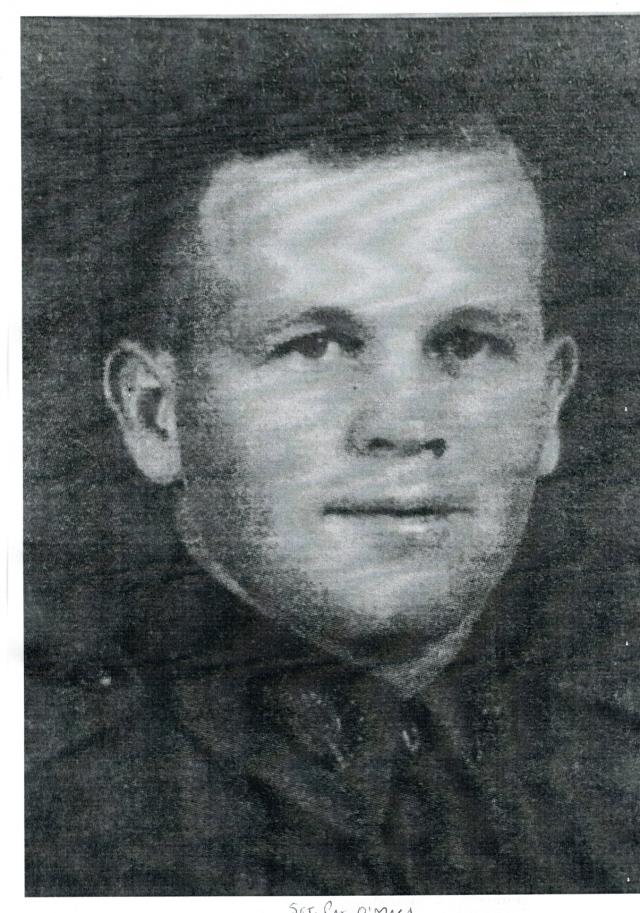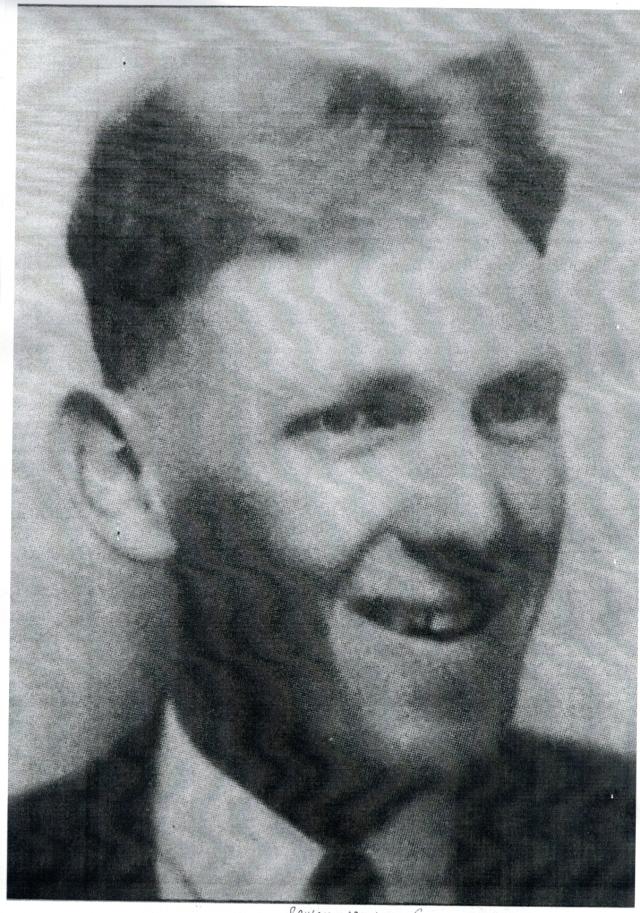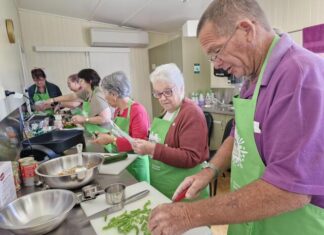The Anzac story to me, is a never-ending story of mateship demonstrated by the young men who answered the call in the conflicts that has involved Australian soldiers from the cliffs of Anzac Cove, to our commitment to our treaties with other countries since. However, there is one story that I have written that espouses that meaning of the mateship legend that began at Gallipoli and in the trenches of World War I. The story that demonstrates this meaning of mateship, is about two young men who went to war in World War II and shared a sad, but beautiful story, of their eternal mateship.
My story ended in the jungles of Torokina in Borneo, but began in Warwick on 2 June 1941 when good mates Michael (Mick) Sparkesman and John Patrick O’Mara (known as Pat) enlisted into the Australian army together.
Mick was a farmer and truck driver from Mount Marshall, near Allora, and Pat was a baker in Warwick. What they had in common was that they were both educated at the Christian Brothers College in Warwick and although there is an age gap, it is assumed that they were mates as they grew into adulthood. Mick was the youngest son of Edward (dec.) and Annie Sparksman, who came from a big family of 11 children and Pat was the only son and four sisters, of John and Bridget O’Mara of Warwick.
Like many of their mates in this time, they were prepared to serve the nation, when a militant Japan was on the march south towards Australia, after the fall of Singapore in 1941.
Mick was sent to Chermside army camp in Brisbane on 21 June until 19 September 1941, for recruit training while Pat was sent to Cabarlah camp near Toowoomba. Their local Militia training in Warwick helped.
Once training was completed., Pat was sent to do a cooking course but once completed he was on standby to go to New Guinea. On 12 July 1941, both Mick and Pat embarked from Townsville on the troop ship “Bontekoe” and landed at Milne Bay on 25 November 1941.
Mick was popular among his mates because of his harmonica playing, but once they were in New Guinea things changed. Both were affected by Malaria like many of the troops there and found the tropics very hot and mosquito infested. Mick suffered badly with malaria and was evacuated back to Australia via the HS “Duntroon” and spent time in the Australian General Hospital in Warwick to recover.
Pat was proving to be a good soldier and was promoted to Sergeant on 9 October 1942, and both he and Mick were then sent to join the 25th Battalion in Borneo. On 27 December, Pat was sent to the 11th Field Ambulance suffering from malaria. He was then transferred to the Australian Army Canteen Service, and spent time in Cairns when taken back to Australia for treatment.
Mick and Pat were with the 25 Battalion in action in the jungles of Borneo and went into combat with them in the push against the Japanese who were trying to come down the Kokoda track, in another aborted attempt to take Milne Bay after their initial defeat in August.
When Lieutenant Colonel McKinna spearheaded an attack on the entrenched Japanese forces at Torokina in an effort to halt their advance, he underestimated the Japanese forces, as unknown to the Australians, the 81 infantry regiment of the Japanese army of 80 to 90 men, were reinforced by men from the Japanese 38th Mixed Brigade under Major-General Kesao Kijima, with 550 men. They fortified the ridge with bunkers, pill boxes and weapon pits as well as snipers covering all tracks on the ridge. In March and April 1945, it was difficult to get supplies and ammunition to the Australian forces at Torokina. However, when heavy fighting occurred with many casualties on both sides, McKenna ordered a jeep train carrying much needed supplies of rations and ammunition forward, to also assist in the evacuation of the wounded and they did not realise they were going into a Japanese ambush.
This what happened as told by Private Bert Biddle, a stretcher bearer:
“As we reached the scene of the ambush, Captain Just ordered me forward to attend to the casualties in the jeeps. Asking for covering fire and sprinting fast the thirty yards or so, reached the jeeps and managed to ascertain that Mick Sparksman, Stumpy McGrath and Pud Miller were deceased. I sprinted back to Company Headquarters sheltering behind a big tree. Next thing I knew the leading tank was firing at us the tracer bullets were streaming just six inches over our heads and thudding into the tree trunk. Thankfully the tanks had a liaison officer on the ground who made himself by waving his arms and screaming out ‘Stop! Stop!”
Sergeant Pat O’ Mara, who was with the jeep convoy, was seriously wounded and died later of his wounds.
It is not known who organised the burial of Mick and Pat, but their great friendship was acknowledged by the fact that they were buried side by side in the Torokina War Cemetery with Mick’s grave Plot D, Row C, grave 13, and Pat’s grave along- side his mate Mick, in Plot D, Row C, Grave 14.
What is rather unique, is that in their short lives they had joined the army together, sailed to New Guinea together, served in the 25th Battalion together, died in the same action together, were buried at Torokina together, were exhumed together, and now rest together in the Port Moresby’s Bomana War Cemetery in B3, Row F, graves 21 and 22. Mates to the end.
This rather poignant story of two Warwick men locked into Anzac history by this great example of eternal mateship, ensures that they will be forever remembered and treasured by their loved ones and a grateful nation.
They both are remembered on the Roll of Honour at the Warwick Shrine of Remembrance and at the Australian War Memorial, Canberra, where they are eternally honoured by having their name projected onto the Hall of Memory.
Pat O’Mara will have his name projected on Wednesday 13 September 2023 at 10.25 pm, and Mick Sparksman will have the same honour given to him on Monday 18 September 2023 at 1.18 am.








